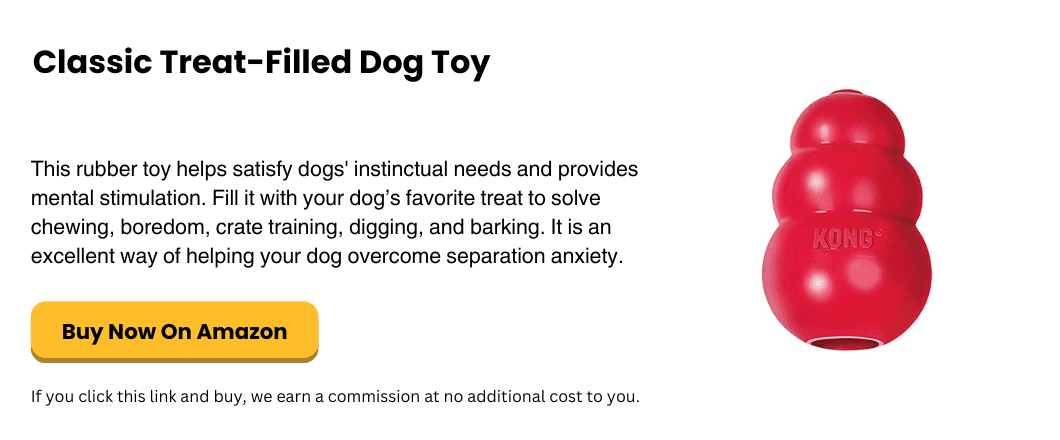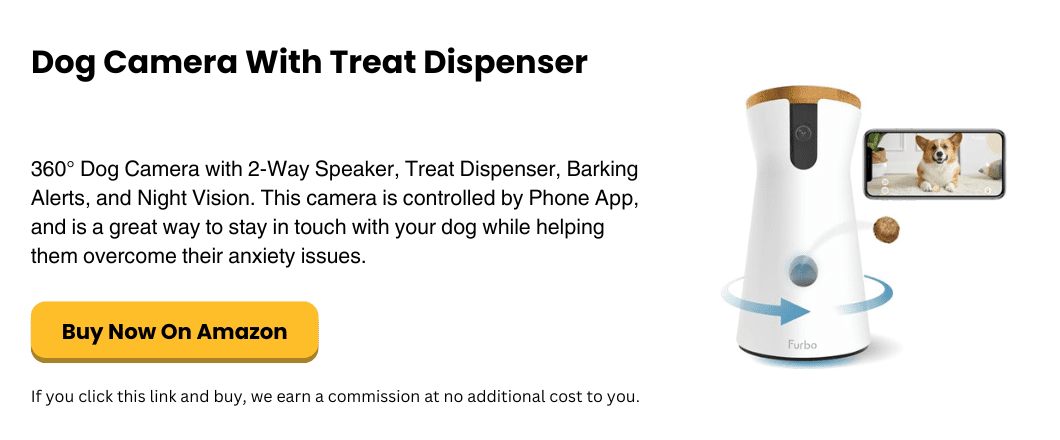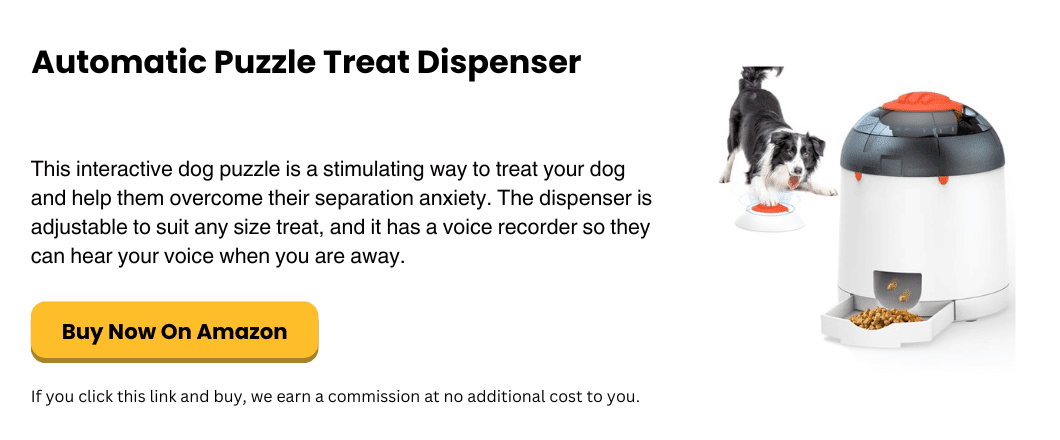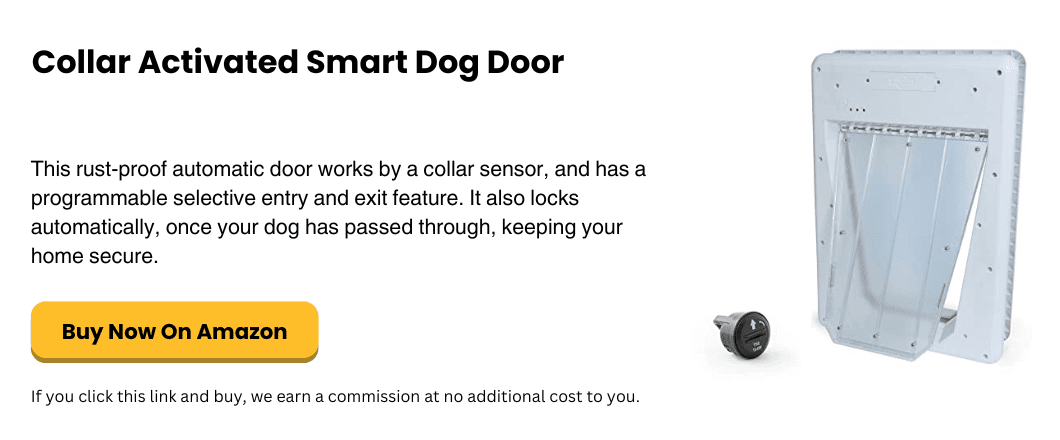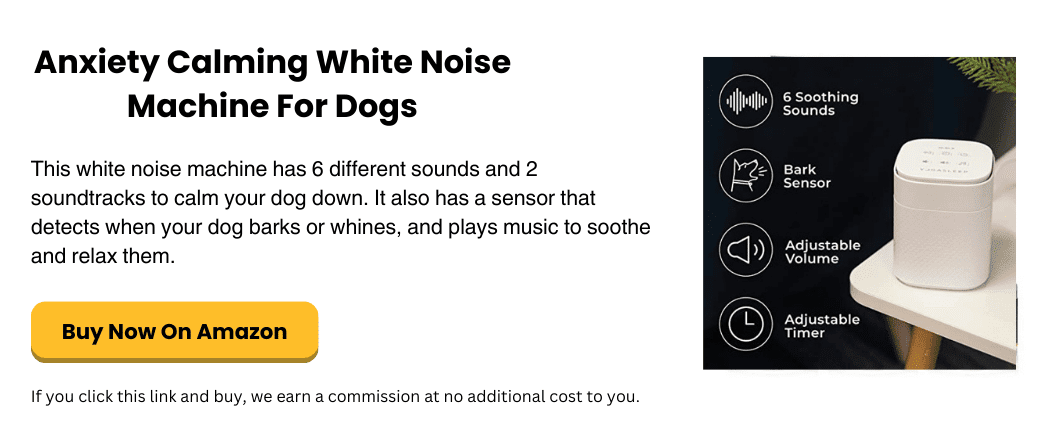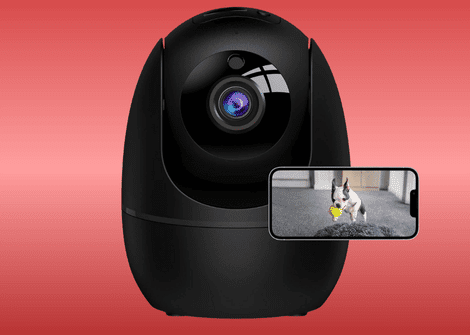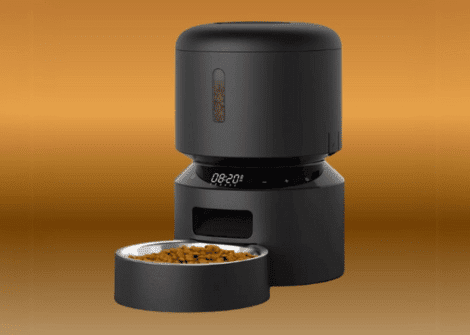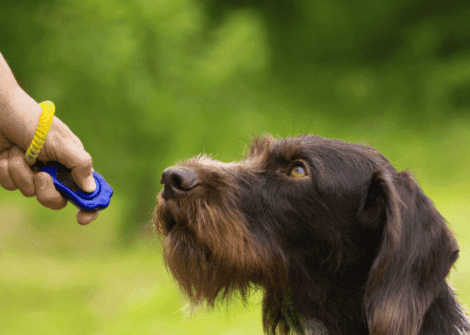How to Stop Dog Separation Anxiety: 7 Effective Solutions for Pet Owners
Does your dog become anxious when you leave the house? Do they bark, whine, chew furniture, or have accidents indoors when left alone? If so, they are most probably suffering from separation anxiety, a common issue affecting over 70% dogs at some point in their lives. This condition can be stressful for both you and your pet, but the good news is there are effective ways to help them overcome their anxiety and make them feel more secure when you’re away.
In this guide, we’ll break down what separation anxiety is, why it happens, and how you can help your dog overcome it. Plus, we’ll dive into some smart pet technology that can make a big difference
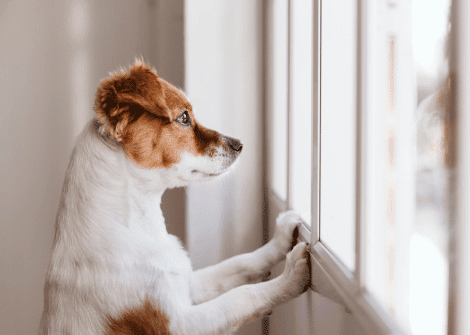
Table Of Contents
Understanding Separation Anxiety In Dogs
How To Really Help Your Dog Overcome Separation Anxiety
Using Smart Pet Technology To Help With Separation Anxiety
Frequently Asked Questions About Separation Anxiety
Understanding Separation Anxiety In Dogs
What Causes Separation Anxiety?
Separation anxiety occurs when dogs become overly distressed when left alone. Some common causes include:
- Lack of early socialization – Dogs that weren’t exposed to being alone at a young age may struggle with separation.
- Sudden changes in routine – A shift in your work schedule, moving to a new home, or the arrival of a new family member can trigger anxiety.
- Traumatic experiences – Rescue dogs or those with a history of abandonment are much more likely to suffer with separation anxiety.
- Overdependence on owners – Some dogs become too reliant on human companionship and struggle when they are left alone.
- Lack of mental stimulation – Dogs left alone without toys or activities may become anxious due to boredom.
Signs Of Separation Anxiety
If your dog shows any of these behaviors when you leave them alone, then it’s extremely likely they have separation anxiety:
- Excessive barking, whining, or howling.
- Pacing or drooling excessively.
- Destructive chewing or scratching.
- Indoor accidents despite being house-trained.
- Loss of appetite when they are left alone.
- Attempting to escape through doors or windows.
- Being way too over-excited when you return home
Recognizing these symptoms early is crucial for effective intervention.
How to Really Help Your Dog Overcome Separation Anxiety
The key to reducing separation anxiety is helping your dog feel safe and confident when they are left alone. It’s going to take a little patience, effort, and time, but the end result will give you and your dog peace of mind. So here’s what you can do:
1. Gradual Desensitization
Start by leaving your dog alone for short periods and gradually increase the time. For example:
- Step outside for a minute, then return.
- Extend the time to 5, 10, and then 30 minutes.
- Gradually work up to a few hours.
- Reward calm behavior when you return.
- If they get over-excited when you return, then ignore this excessive behavior and wait for your dog to calm down before you reward or make a fuss of them.
This slow adjustment teaches your dog that you will always come back, and that being alone is safe.
2. Create A Safe And Comfortable Space
A cozy, familiar space helps dogs feel more secure when they’re alone. Try these tips:
- Use a crate or a quiet room with their favorite bed and blanket.
- Provide interactive dog toys to keep them engaged.
- Play soothing music or white noise to create a calming atmosphere.
3. Don’t Make a Big Deal Out of Leaving or Returning
Your dog is great at picking up cues. So they may start to become anxious when they see the signs that you’re about to leave, such as putting on your shoes and jacket, or picking up your keys.
To stop this happening, the answer is to do those things, but then don’t leave the house.
Put on your shoes and sit down on the couch. Pick up your keys and go watch TV. Do this again and again, several times a day. In this way, your dog will stop associating those cues with your actual departure.
Then, when you do leave, it’s a great idea to avoid emotional goodbyes. Instead of fussing over your dog and saying, “I’ll miss you so much!” just calmly walk out.
Similarly, when you return, wait a minute or two before greeting your dog, to avoid reinforcing – and rewarding – their over-excited behavior.
4. Establish A Predictable Routine
Dogs thrive on routine. Create a daily schedule that includes:
- Regular feeding times.
- Daily exercise (walks, playtime, mental stimulation).
- That all-important calm departure and arrival routine (avoid making a big deal when leaving and returning).
- Gradual, structured alone time.
5. Exercise Before You Leave
A tired dog is a happy dog! So if you have the time, give your dog a long walk or a play session before leaving. This helps them release energy and reduces anxiety.
6. Use Interactive Toys
“Work their mind as well as their body. That will keep them busy, happy, and too tired to be anxious while you’re gone”
Puzzle toys and treat dispensers keep your dog mentally engaged. For a simple and affordable solution to start the process, you might want to try a Kong toy filled with peanut butter to keep them busy, stimulated and engaged. Or you might want to check out some more challenging and fun smart interactive toys, which we will look at in a minute.
7. Try Calming Supplements or Pheromone Diffusers
If your dog’s anxiety is really severe, natural calming aids can help:
-
CBD oil or calming chews – These help reduce stress.
-
Adaptil Diffuser – Releases dog-calming pheromones to create a soothing environment.
Using Smart Pet Tech to Help with Separation Anxiety
Thanks to advancements in smart pet technology, there are now several products designed especially to help anxious dogs feel more secure while home alone.
1. Smart Pet Cameras
Smart pet cameras help reduce separation anxiety in dogs by allowing owners to monitor, interact, and comfort their pets remotely. With two-way audio, owners can talk to their dogs, providing reassurance and reducing stress. Some even have a treat dispenser to help reinforce positive behavior, while motion detection and barking alerts keep you informed of your pet’s activity. A number of cameras even have night vision for 24/7 monitoring.
By using a WiFi pet camera, owners can maintain a connection with their dog, easing their anxiety and creating a more secure home environment. Investing in a smart dog camera ensures your furry friend feels loved, even when you’re away.
2. Automatic Treat Dispensers
Automatic treat dispensers are also an excellent tool for reducing separation anxiety in dogs, providing comfort, stimulation, and positive reinforcement while you’re away. The best ones include an interactive puzzle or game which your dog must solve in order to be rewarded with a treat. This keeps them involved and mentally stimulated, and gradually eases their stress and prevents destructive behaviors.
3. Interactive Smart Toys
Interactive smart toys keep dogs mentally and physically engaged, reducing separation anxiety by providing entertainment and stimulation when they are left alone. Toys like automatic ball launchers, robotic toys, and wicked rolling balls help redirect your dog’s anxious energy into play. They eliminate anxiety by preventing boredom, reducing destructive behavior, and promoting independent play.
The best Smart pet toys have motion sensors, customizable play modes, and even app controls that allow you to engage with your dog remotely. We believe that investing in interactive dog toys will help to ensure a happy, less stressed dog while you’re away.
4. Smart Dog Doors
Smart dog doors provide freedom and security for anxious pets by allowing them to move between indoor and outdoor spaces without owner assistance. These high-tech pet doors use microchip recognition, RFID (radio frequency identification), or app control, ensuring only your dog can access them.
By reducing feelings of confinement, smart dog doors help ease separation anxiety in dogs, giving them a sense of independence, and allowing you to feel less stressed and worried about your dog. For more detailed information, you might want to check out our Guide to Smart Dog Doors..
5. Smart Calming Devices
Smart calming devices for dogs help ease separation anxiety by providing comfort, engagement, and relaxation when owners are away. These anti-anxiety pet gadgets keep dogs relaxed, preventing destructive behaviors. Investing in smart anxiety relief for dogs ensures a happier, stress-free pet and peace of mind for owners.
6. Smart Collar
When you are in the process of training your dog to overcome their separation anxiety, it’s nice to be able to keep track of how they’re doing while you are away from home. That’s where a smart collar can help.
These are designed to monitor your dog’s activity, behavior, sleep, and even its health. The best collars also have a GPS tracker, so that you always know exactly where your dog is – this is invaluable if you’re worried that your dog’s anxiety might be so severe that they will try to escape from the house in an effort to somehow come and find you.
Frequently Asked Questions About Separation Anxiety In Dogs
I’m sure you still have some questions about Separation Anxiety, so here are the most frequently asked questions that hopefully will answer your queries and concerns.
What causes separation anxiety in dogs?
Separation anxiety can develop due to:
- A sudden change in routine – such as a new work schedule or a recent house move.
- Past trauma or abandonment – this is very common in rescue dogs.
- Overdependence on owners – especially if your dog has never been left alone before.
- Loss of a family member – either a human or another pet. This includes when your children grow up and move out of your house.
Can separation anxiety be prevented?
Yes! Early training and socialization help reduce the chances of separation anxiety. Some preventive measures include:
- Teaching your dog gradual independence from a young age.
- Establishing a consistent routine to create predictability.
- Leaving your dog alone for short periods and gradually increasing the time.
- Encouraging independent play with toys and puzzles.
Can training help reduce separation anxiety?
Absolutely! Training can be very effective. Techniques like reward-based crate training, teaching independence, and using positive reinforcement can help. A professional dog trainer or behaviorist can also provide structured training plans tailored to your dog’s needs.
How long does it take to fix separation anxiety?
There’s no set timeline, I’m afraid. It depends on your dog’s personality, the severity of their anxiety, and the consistency of your training. Some dogs improve in a few weeks, while others need several months of gradual desensitization. Patience and a structured approach are key!
Can dogs outgrow separation anxiety?
Some dogs do improve over time on their own. However many do not, and their anxiety can get even worse, so this is be a risky approach to take with no guarantees. The best way forward is with consistent training and desensitization. The key is to help your dog feel safe and secure while gradually teaching them that being alone is not scary.
Should I crate my dog if they have separation anxiety?
It depends on your dog. Some dogs feel safe and secure in a crate, while others may become more anxious if they associate it with isolation. If using a crate:
- Make it a positive, comfortable space with soft bedding and favorite toys.
- Never use it as punishment.
- Ensure your dog has proper crate training before relying on it during your absences.
Can exercise help reduce separation anxiety?
Absolutely! A tired dog is a calmer dog. Make sure to:
- Give your dog a long walk or play session before leaving.
- Engage them in mental stimulation (training, scent games) to tire them out.
- Allow time for them to relax and settle down before you go.
When should I seek professional help for my dog’s separation anxiety?
If your dog’s anxiety is severe—causing self-harm, nonstop distress, or property destruction—it’s best to consult a veterinarian or professional dog behaviorist. In some cases, medication prescribed by a vet may be needed alongside behavioral training.
Final Thoughts
Separation anxiety can be tough, but with the right training, patience, and tools, you can help your dog feel more confident and relaxed when they’re left alone.
Start with gradual training, exercise, and mental stimulation, and consider using smart pet technology to make the process easier. Every dog is different, so find what works best for your furry friend.
Most importantly, remember: your dog isn’t acting out on purpose—they’re just scared and need reassurance. With time and effort, they can learn that being alone isn’t so bad after all!
More Reading
Smart pet cameras are a great way to stay connected with your dog, no matter where you are. These high-tech devices offer live video streaming, two-way audio, motion alerts, and even treat dispensers.
Your dog thrives when it has a routine, and automatic feeders ensure timely, portion-controlled meals. With WiFi connectivity, the best ones let you check in on your dog in real time as well.
Training your dog is a lot easier these days, thanks to smart training tools that teach your dog good habits and behavior. Check out how they can make training fun and enjoyable for you both.

